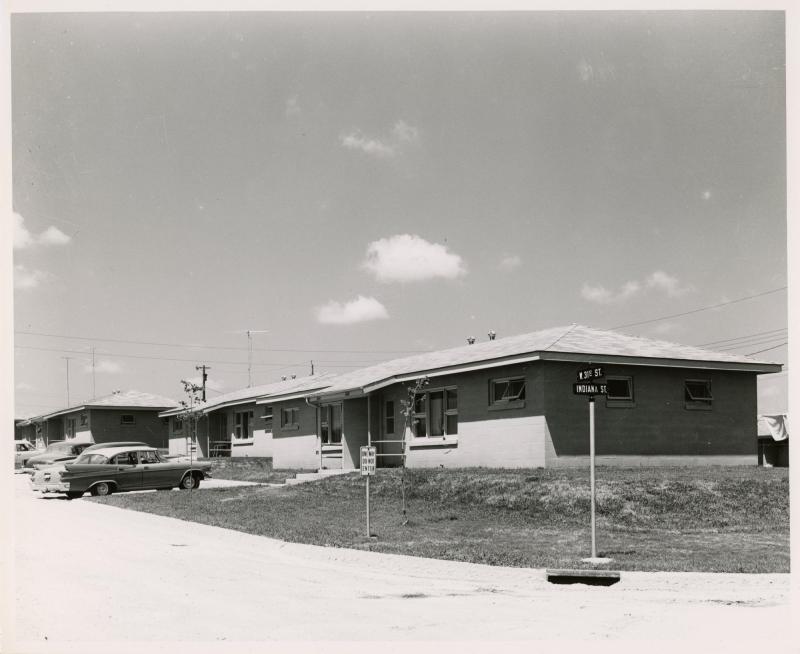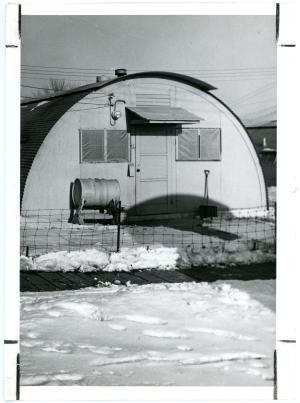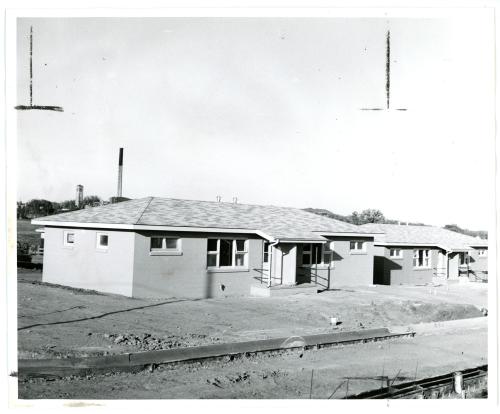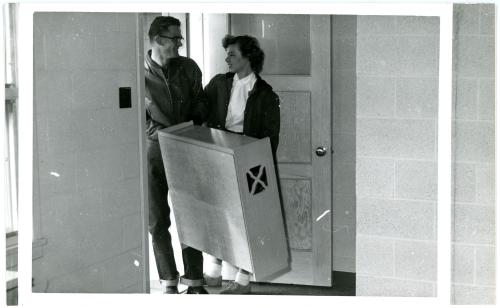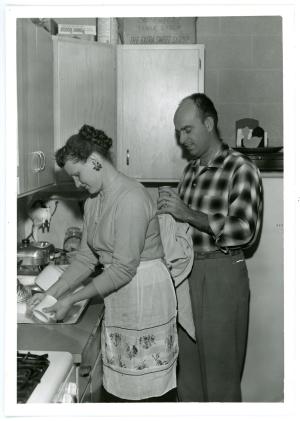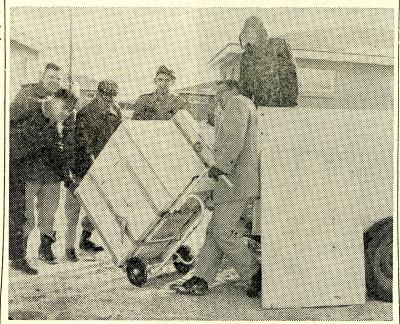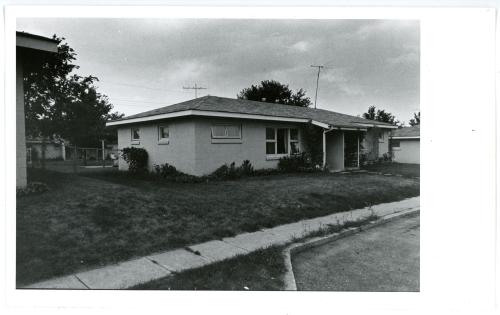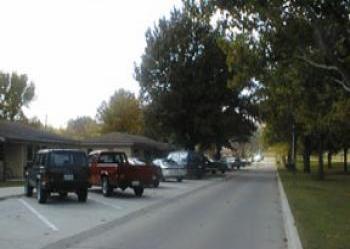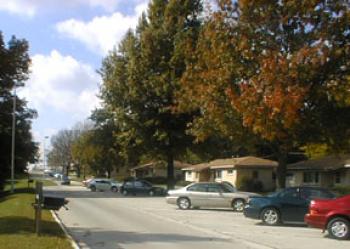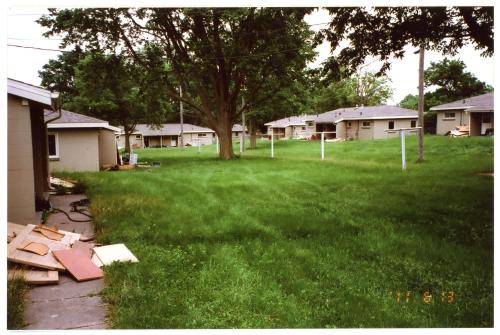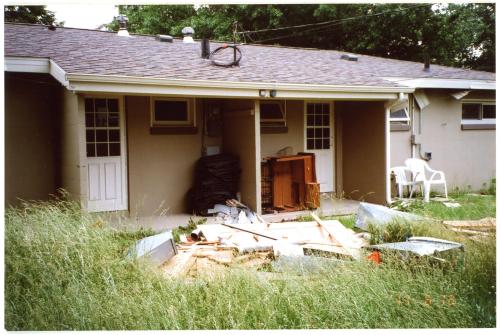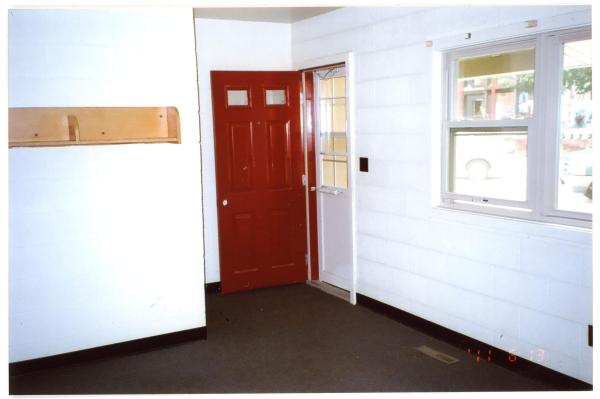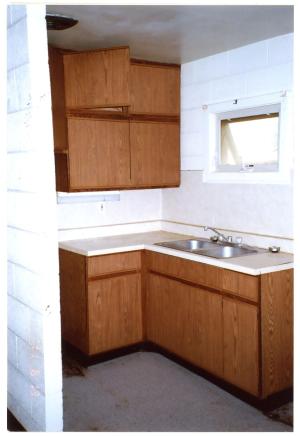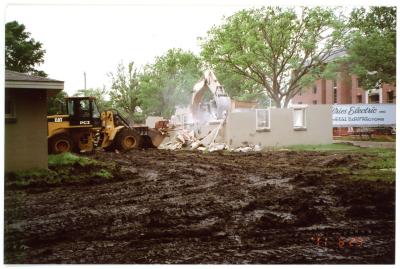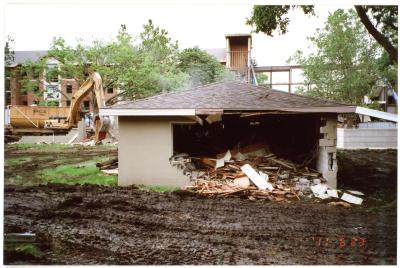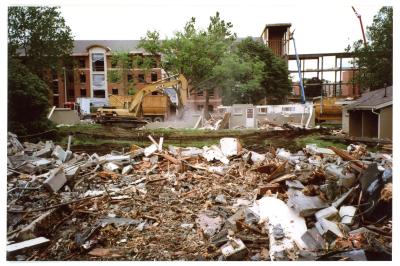The Board of Regents announced in December 1955 that it had approved a budget of $180,000 to construct new married student housing on the Iowa State Teachers College campus. The new units would be financed by bonds and repaid by revenues from campus housing facilities. Authorities hoped to begin construction April 1, 1956, and to have the units ready for use by the fall term of 1956. These new units were meant to supplement and eventually to replace the "temporary" housing in Sunset Village, which had been erected in 1946-1947 and was well past the end of its anticipated five year useful life.
A contract for $176,000 was let in June 1956 and construction began in early July.
E. E. Cole, Superintendent of the Physical Plant on campus, designed the new units. The building site was in the southwest corner of campus, described in those days as "a pretty good hike" from college instructional buildings.
College publications consistently painted rosy pictures of the new facilities, nearly always making contrasts with the comparatively rough conditions in Sunset Village.
The contrasts showed a remarkable upgrade in campus married student housing. The walls were to be made of concrete block, not corrugated steel. The units were to be heated by forced air gas furnaces, as opposed to the dirty oil heaters of Sunset Village. There would be play areas for children. The kitchens were to be equipped with gas stoves and electric refrigerators. Tenants were to pay for utilities. Each unit would have two bedrooms, a living room, and a combined kitchen and dining area. Each bedroom would be about 11 X 10 feet, the kitchen/dining area would be about 12 X 12 feet, the living room would be about 18 X 12 feet, and the bathroom would be about 5 X 8 feet.
The contractor met an adjusted completion date, and families occupied the new units in December 1956. In February 1957, the Alumnus effused about the "brightly colored assortment of sturdy, pleasant houses" in College Courts. The same writer also believed that "The passing of an era was heralded this winter at ISTC as a dozen new duplex housing units for married students were occupied, paving the way for the ultimate replacement of Sunset Village." Depending on how one defines "ultimate", this prediction proved optimistic: students remained in the old military surplus Sunset Village units across University Avenue until August 1972.
In the spring of 1958, construction of a second set of twelve duplexes, very similar to the first batch of twelve units, was approved. This set was designed by architects Grow and Devoe of Cedar Falls and cost around $171,000 to construct. These units were ready for occupancy on January 22, 1959.
New College Courts residents found the units "great" and "wonderful". They liked the shower/bath tub combination. Families that included children especially liked the play area, which could be easily supervised.
Students seemed to express few complaints about College Courts over the years. Monthly rent in 1967 was $62. It had climbed to $80 per month by 1974. All married student housing remained at a very high rate of occupancy. The buildings were painted and repaired in 1981 in a $30,000 project.
In the summer of 2002, College Courts roads, which had fallen into a bad state of repair, were reconfigured and replaced. The new configuration attempted both to limit and to slow through traffic with a system of one-way streets.
Following hail and windstorms, the units received new roofs in 2010. In the spring of 2011, residents of College Courts received notification that leases would not be renewed for the following semester. College Courts would be demolished to make way for Phase II of the Panther Village apartment style housing complex. By late May 2011 the last residents of College Courts units had moved out. Crews then began to clear the units of salvageable material and to work on asbestos abatement procedures in preparation for the demolition of College Courts.
Demolition of College Courts began during the week of June 20, 2011. The western half of the complex was demolished first.
The eastern portion of College Courts was demolished during the week of July 11, 2011. Tall, fifty-year-old ash, pin oak, and hackberry trees were cut down during the demolition process. Foundations of the housing units were removed and the area was graded during the week of July 18, 2011.
Compiled by Library Assistant Susan Witthoft; edited by University Archivist Gerald L. Peterson, September 1996; substantially revised by Gerald L. Peterson, with scanning by Library Assistant Gail Briddle, September 2002; additional scanning by Library Assistant David Glime; last updated, January 28, 2015 (GP); Photos and captions updated by Graduate Assistant Eliza Mussmann May 5, 2022.

